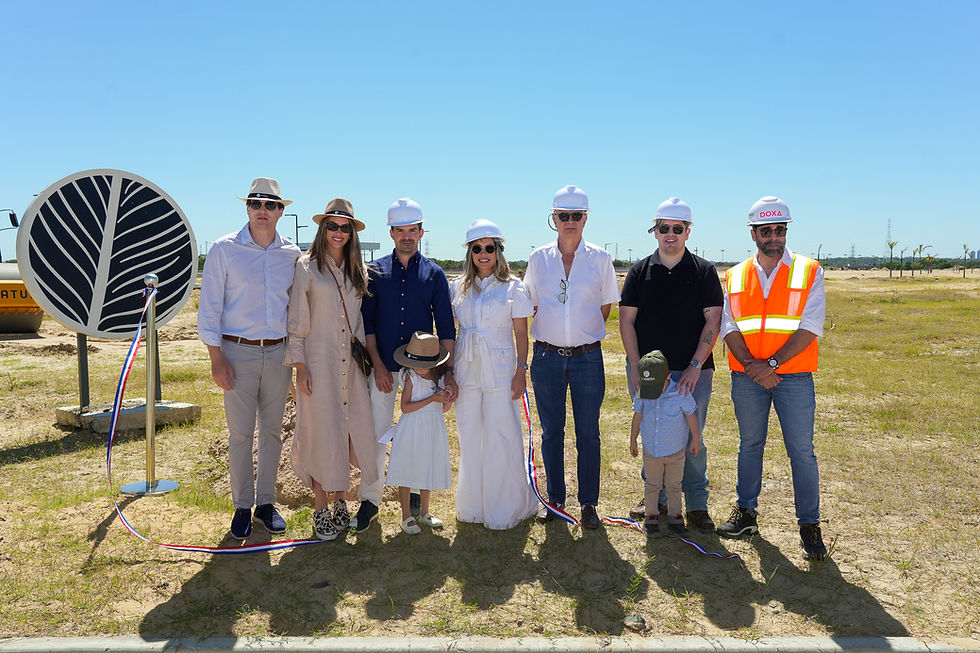Condominium Management Fundamentals: What Every Owner Should Know
- Paraguay Sotheby’s International Realty

- Aug 12
- 5 min read
Updated: Aug 27

In the Paraguayan real estate market, Gustafson & Asociados has been involved in pioneering projects that have not only transformed the urban landscape but also the way life is conceived in buildings and condominiums. Nathaly Gustafson, in addition to her role in marketing through Paraguay Sotheby's, leads the administration of all the firm's developments through MAJUBE SA, a structure created specifically to ensure the quality of the projects remains intact over time. MAJUBE's relevance lies in two key aspects: it is a company created to manage solely and exclusively the buildings developed by Gustafson, which allows it to count on the logistical support of the construction and development company itself, and with a work team made up of people trained within the company, who have in-depth knowledge of each building and are fully committed to the quality of the service they provide. In this article, Nathaly shares her approach, lessons learned, and recommendations on how professional, transparent, and proactive management can make the difference between a building that ages gracefully and one that loses value over the years.
Condominium management is, in essence, the backbone of community life within a building. Its scope extends far beyond the timely payment of bills or the contracting of basic services. It entails comprehensive management that combines two complementary dimensions: operational, focused on functionality and daily maintenance, and administrative, focused on financial transparency, planning, and decision-making. In practice, this means that every task, from verifying the functioning of equipment to managing major investments, must be approached with a preventive approach and a rigorous methodology. Experience shows that improvisation in management ends up being costly, both financially and in terms of quality of life for residents.
On the operational level, efficient management doesn't wait for contingencies to arise: it works to ensure they don't occur. This requires implementing preventive maintenance plans that cover everything from electrical systems and water pumps to elevators and generators. The key lies in regularity and strict adherence to schedules. Anticipating a major failure, such as an elevator repair or the replacement of a backup power system, not only saves money but also prevents residents' lives from being disrupted. The ability to respond to unforeseen events is another pillar of the operational area: prolonged water outages, power outages, or structural failures demand immediate and coordinated solutions, with a team available 24/7 to ensure the building continues to operate normally, even under adverse circumstances.
The administrative dimension is equally critical, although often less visible to owners. In this area, management focuses on transparency, efficiency, and clarity of processes. The use of integrated administration systems allows for detailed and organized records of each expense, automating the issuance of expense sheets and generating reports that accurately show how each guaraní is invested. This level of detail not only facilitates accountability but also strengthens trust between management and co-owners by eliminating areas of uncertainty or mistrust. A well-designed administrative process establishes filters and authorizations that ensure each payment is properly documented, minimizing the possibility of errors or unclear management.
But managing a consortium isn't just about keeping the accounts in order and the services running. Management involves a crucial human component: the ability to mediate, listen, and facilitate agreements between owners with different interests and priorities. In Paraguay, co-ownership regulations for horizontal properties—such as buildings or condominiums—establish the rules for living together and the use of common and private areas. These regulations are mandatory; they must be formalized by public deed and registered in the Property Registry. They involve the intervention of the Municipality, which, within the framework of its urban planning powers, participates in the approval and regulation of these documents.
It is common practice to hold a general meeting once a year to present accounts, present financial statements, and define policies for the following fiscal year. In these meetings, management not only acts as a decision-maker but should also act as a technical and strategic guide, presenting proposals that respond to the building's real needs and providing clear information so that co-owners can make informed decisions.
In parallel, each consortium appoints a board of directors that functions as a liaison and advisory body. This board represents the owners in overseeing management and evaluating investment or improvement proposals. Fluid communication between the board and management is essential to maintaining coherent actions and ensuring that decisions respond to the collective interest. Experience shows that when management is proactive, proposing improvements and strategies before problems become urgent, the community responds positively and investments are made with consensus.
One aspect that makes a difference in management is the strategic vision with which the building is conceived from the outset. When the design and typological composition of the units consider how the complex will be managed, subsequent management is greatly facilitated. Avoiding extreme combinations of typologies—such as mixing studio apartments with luxury penthouses—reduces the risk of conflicts of interest in assemblies and promotes a community with more consistent goals. This initial planning is a competitive advantage that, in practice, translates into more agile and less conflictive management.
Aspects such as safe access for cleaning facades and windows, the strategic location of technical rooms so staff can work without interfering with common areas, the choice of durable and easily replaceable materials, or the installation of systems that simplify the inspection and repair of critical equipment are decisions that, although invisible to the buyer at the time of purchase, determine the efficiency and cost of future management. This initial planning not only improves daily operations but also constitutes a competitive advantage that, in practice, translates into more agile, less conflict-ridden, and financially more efficient management.
Finally, management plays a decisive role in preserving the value of a real estate asset. A building that receives constant maintenance and periodic improvements can remain competitive in the market, even after decades. The example of the 15-year-old Castavista building, which recently underwent a repaint, confirms this: sustained maintenance not only prevents depreciation but also projects an image of quality that attracts new buyers and reinforces the confidence of current residents. In contrast, poor management can lead to a property losing its appeal and becoming a liability rather than an asset.
Properly executed condominium management is a discipline that combines technique, strategy, and commitment. It is work largely invisible to those who enjoy its results, but it is reflected in the quality of life, community harmony, and the economic value of the property. In a market where competition between developments is increasingly intense, the difference between a building that ages gracefully and one that loses its relevance may lie precisely in the way it is managed.


